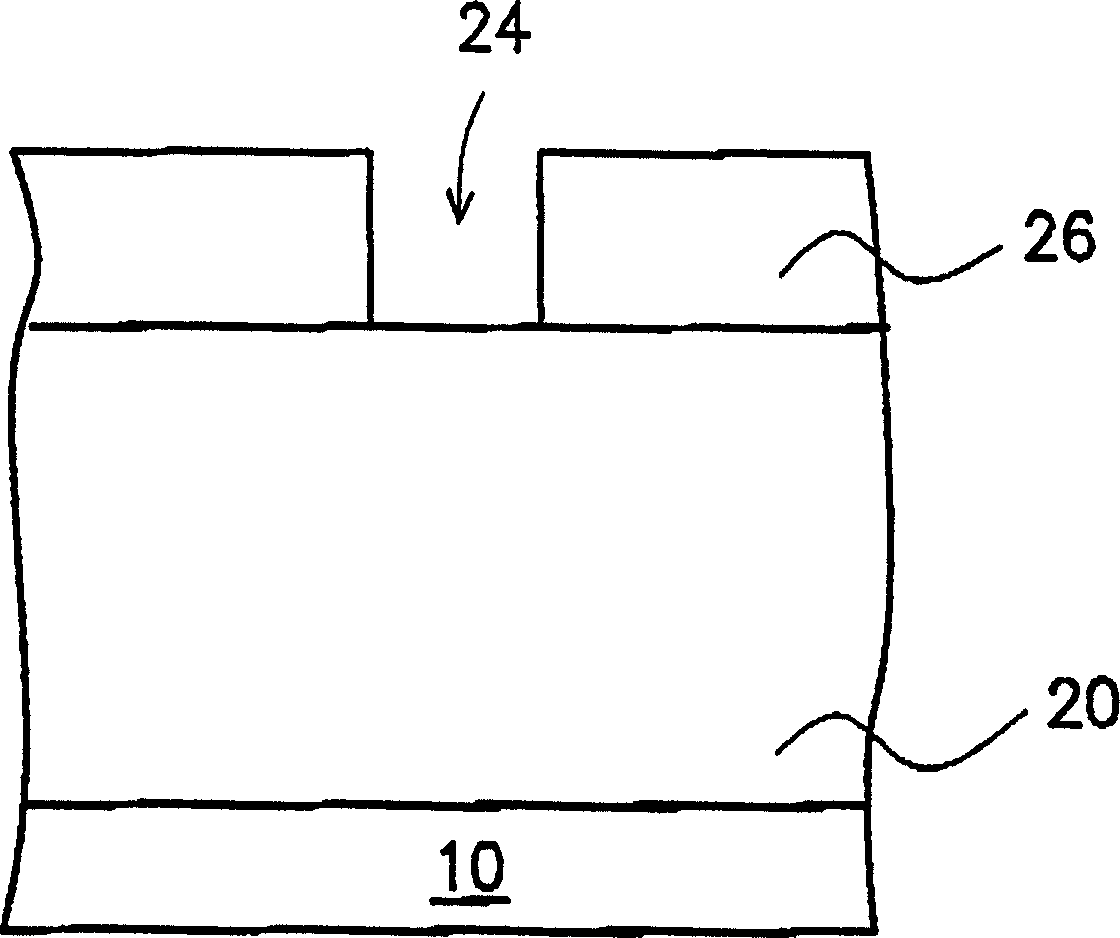Ion implantation method for generating window on dielectric layer
A technology of ion implantation and ion implantation area, which is applied in the manufacture of circuits, electrical components, semiconductors/solid-state devices, etc., and can solve problems such as inability to use manufacturing processes and non-straight contours
- Summary
- Abstract
- Description
- Claims
- Application Information
AI Technical Summary
Problems solved by technology
Method used
Image
Examples
Embodiment Construction
[0028] The present invention provides a method for forming openings in a dielectric layer by ion implantation. The dielectric layer includes, for example, at least one dielectric layer, and the upper layer is an ion-free dielectric layer. Now the photoresist layer is used as the mask layer, hydrogen fluoride is used as the chemical vapor phase etching gas, the ion-free oxide layer is used as the ion-free dielectric layer, and the ion-containing oxide layer is used as the ion-containing dielectric layer. Example. Wherein, the photoresist etching rate of this hydrogen fluoride vapor phase etching is small, such as less than 50 angstroms / minute, preferably less than 10 angstroms / minute, and the selectivity ratio of photoresist is large, such as greater than 20, preferably greater than 80.
[0029] Figure 3A to Figure 3E , is a schematic cross-sectional view of the process flow of the method for forming openings in the dielectric layer by ion implantation according to the prese...
PUM
 Login to View More
Login to View More Abstract
Description
Claims
Application Information
 Login to View More
Login to View More - R&D
- Intellectual Property
- Life Sciences
- Materials
- Tech Scout
- Unparalleled Data Quality
- Higher Quality Content
- 60% Fewer Hallucinations
Browse by: Latest US Patents, China's latest patents, Technical Efficacy Thesaurus, Application Domain, Technology Topic, Popular Technical Reports.
© 2025 PatSnap. All rights reserved.Legal|Privacy policy|Modern Slavery Act Transparency Statement|Sitemap|About US| Contact US: help@patsnap.com



